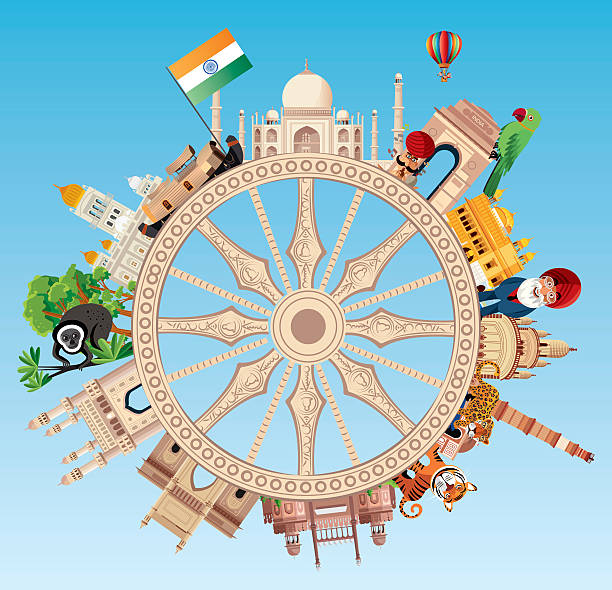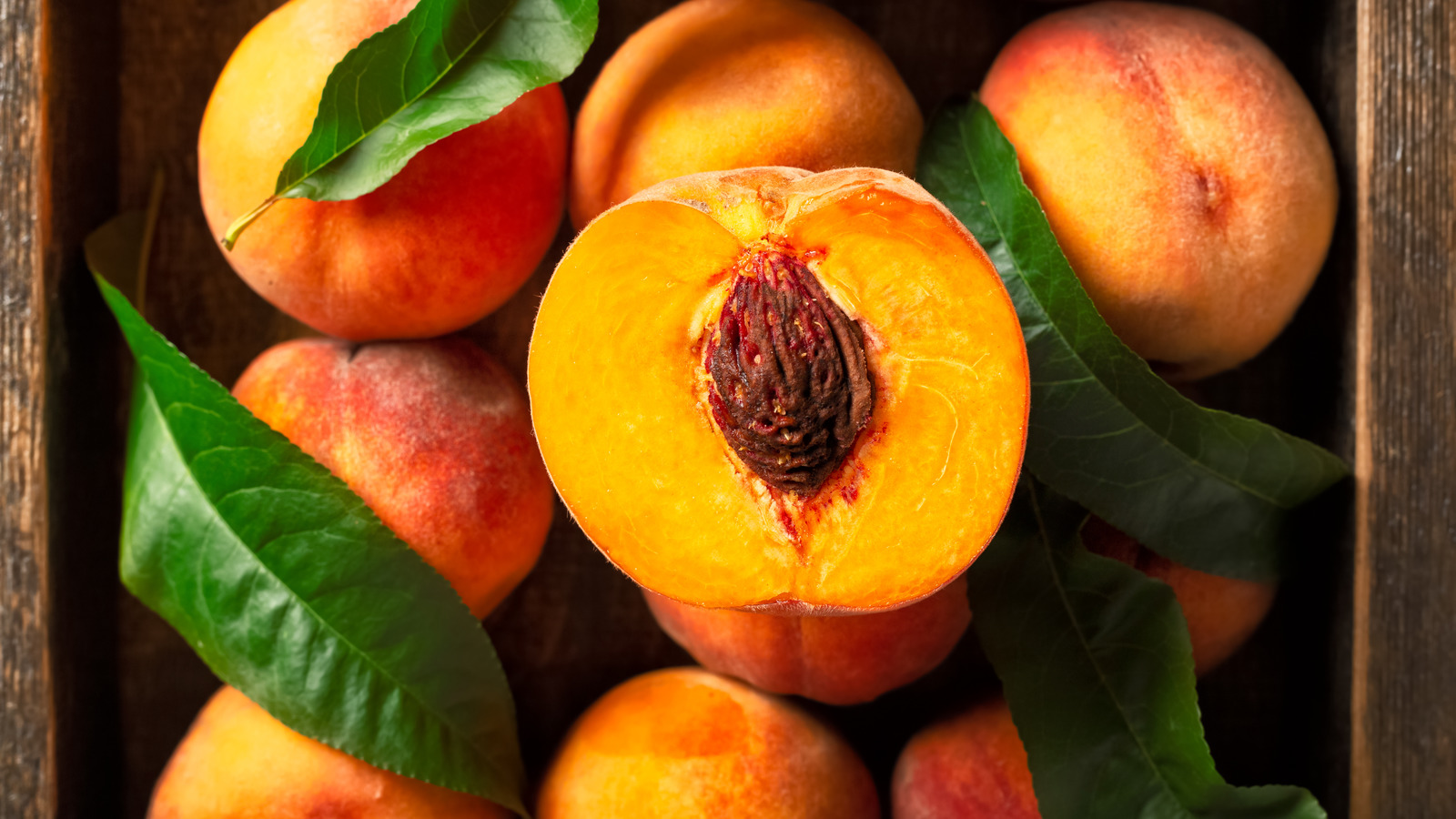“General Information About Republic of India“
Official Name |
Republic of India |
Local Name |
Bhārat Gaṇarājya |
Flag |
Horizontal tricolour flag with deep saffron, white, and green bands. In the center, a navy-blue wheel with 24 spokes. |
State Emblem |
Three lions, horse, wheel, and elephant atop a frieze. Motto: “सत्यमेव जयते” (Satyameva Jayate) |
National Anthem |
“Jana Gana Mana” (Hindi) |
National Song |
“Vande Mataram” (Sanskrit) |
Capital |
New Delhi |
Largest City |
Mumbai (city proper), Delhi (metropolitan area) |
Official Languages |
Hindi, English |
Recognized Regional Languages |
State level and Eighth Schedule |
Native Languages |
447 languages |
Religion |
79.8% Hinduism, 14.2% Islam, 2.3% Christianity, 1.7% Sikhism, 0.7% Buddhism, 0.4% Jainism, 0.23% unaffiliated, 0.65% other |
Government |
Federal parliamentary constitutional republic |
President |
Droupadi Murmu |
Vice President |
Jagdeep Dhankhar |
Prime Minister |
Narendra Modi |
Chief Justice |
Dhananjaya Y. Chandrachud |
Lok Sabha Speaker |
Om Birla |
Legislature |
Parliament |
Independence |
Dominion: 15 August 1947, Republic: 26 January 1950 |
Last Polity Admitted |
16 May 1975 |
Area |
Total: 3,287,263 km2 (1,269,219 sq mi) |
Water Percentage |
9.6% |
Population |
2023 Estimate: 1,425,775,850 |
Population Density |
420.1/km2 (1,088.1/sq mi) |
GDP (PPP) |
Total: $13.033 trillion |
GDP (PPP) per capita |
$9,073 |
GDP (nominal) |
Total: $3.737 trillion |
GDP (nominal) per capita |
$2,601 |
Gini Index |
35.7 (medium) |
HDI (2021) |
0.633 (medium, 132nd) |
Currency |
Indian Rupee (₹) (INR) |
Time Zone |
UTC+05:30 (IST) |
DST Observance |
Not observed |
Date Format |
dd-mm-yyyy |
Driving Side |
Left |
Calling Code |
+91 |
ISO 3166 Code |
IN |
Internet TLD |
.in (others) |
A Journey Through the History of India
India, a land of ancient civilizations and diverse cultures, has a rich and vibrant history that spans thousands of years. From the Indus Valley Civilization to the struggle for independence and the subsequent development of modern India, this article takes you on a journey through the captivating timeline of this great nation.
Ancient India:
-
Indus Valley Civilization (c. 3300-1300 BCE):
- The Indus Valley Civilization flourished along the banks of the Indus River, known for its well-planned cities like Mohenjo-Daro and Harappa.
- Trade and agriculture played a significant role, with evidence of extensive trade networks and cultivation of wheat, barley, and cotton.
-
Vedic Period (c. 1500-500 BCE):
- The Vedic period witnessed the composition of the sacred texts known as the Vedas and the emergence of early Hinduism.
- Society was structured into four varnas (castes), and rituals, sacrifices, and philosophical speculations formed the core of Vedic life.
- The later Vedic period saw the rise of kingdoms known as Mahajanapadas, with shifting political dynamics across the subcontinent.
-
Maurya Empire (322-185 BCE):
- The Maurya Empire, under the reign of Emperor Ashoka, expanded its territory across most of the Indian subcontinent.
- Ashoka’s conversion to Buddhism and his edicts promoting peace and tolerance had a profound impact on the spread of Buddhism.
-
Gupta Empire (320-550 CE):
- The Gupta Empire is considered a golden age in Indian history, marked by advancements in science, mathematics, astronomy, and art.
- Literature and performing arts flourished, with notable contributions from scholars like Kalidasa.
Medieval India:
-
Islamic Invasions and the Delhi Sultanate (12th-16th centuries):
- Islamic invasions, starting with Mahmud of Ghazni, led to the establishment of the Delhi Sultanate and the introduction of Islamic influences.
- Prominent rulers like Alauddin Khilji and Muhammad Tughlaq left a lasting impact on governance and architecture.
-
Vijayanagara Empire (1336-1646):
- The Vijayanagara Empire in South India reached its zenith under Krishnadevaraya and was known for its grand architecture and patronage of arts.
- The empire reached its peak under the rule of Krishnadevaraya, who expanded its territories and promoted arts, literature, and architectur
- The Delhi Sultanate was established by various dynasties of Turkic and Afghan origin, including the Slave Dynasty, the Khalji Dynasty, the Tughlaq Dynasty, and the Lodi Dynasty.
- The sultanate introduced Persian and Islamic architectural styles, with notable structures like the Qutub Minar and the Alai Darwaza in Delhi.
- It witnessed both periods of centralization and fragmentation, with regional kingdoms asserting their independence from the Delhi Sultanate.
-
Mughal Empire (1526-1857):
- The Mughal Empire, founded by Babur, saw its golden age under Akbar the Great, who implemented policies of religious tolerance and cultural fusion.
- Shah Jahan’s reign witnessed the construction of architectural marvels like the Taj Mahal.
- Aurangzeb’s reign marked the empire’s territorial expansion but also religious intolerance and challenges to its stability.
-
European Arrival and Colonialism:
- European powers, including the Portuguese, Dutch, French, and British, arrived in India in search of trade and established trading posts.
- The British East India Company gradually gained control, leading to the establishment of British rule over the Indian subcontinent.
Early Modern India (1500-1857):
-
Mughal Empire:
- The Mughal Empire, founded by Babur in 1526, spanned a large part of the Indian subcontinent.
- Akbar the Great (1556-1605) implemented policies of religious tolerance, administrative reforms, and cultural patronage.
- Shah Jahan (1628-1658) commissioned the construction of the Taj Mahal, a symbol of Mughal architecture and a UNESCO World Heritage Site.
- Aurangzeb (1658-1707) expanded the empire to its greatest territorial extent but faced challenges due to religious intolerance.
-
European Arrival and Colonialism:
- Portuguese explorer Vasco da Gama reached Calicut in 1498, opening the sea route from Europe to India.
- The British East India Company was established in 1600 and gradually gained control over trade and territories in India.
- The French, Dutch, and Portuguese also established trading posts and competed for influence in India.
- The Battle of Plassey in 1757 marked a significant turning point as the British gained control over Bengal.
-
Maratha Confederacy:
- The Marathas emerged as a powerful regional force in the 17th century under the leadership of Shivaji.
- The confederacy expanded its influence across western and central India, challenging Mughal authority.
- Peshwa Baji Rao I (1720-1740) brought further consolidation and expanded Maratha control over large parts of India.
Modern India (1857-present):
-
British Raj:
- The Indian Rebellion of 1857, also known as the Sepoy Mutiny, marked a significant turning point against British rule.
- The British Crown assumed direct control of India from the East India Company in 1858, establishing the British Raj.
- The Indian National Congress (1885) and other organizations emerged, advocating for independence and self-rule.
-
Independence Movement:
- Leaders like Mahatma Gandhi, Jawaharlal Nehru, and Subhas Chandra Bose played pivotal roles in the struggle for independence.
- Non-violent resistance, civil disobedience, and mass protests became prominent features of the independence movement.
- India gained its independence on August 15, 1947, but was divided into two nations, India and Pakistan, leading to communal tensions and mass migrations.
-
Post-Independence India:
- The Constitution of India was adopted in 1950, establishing India as a democratic republic.
- Economic reforms in the 1990s opened up the Indian economy, leading to significant growth and globalization.
- India faced various challenges, including regional conflicts, poverty, social inequality, and religious tensions.
-
Technological Advancements and Space Exploration:
- India made significant strides in technology, including advancements in information technology, telecommunications, and space exploration.
- The Indian Space Research Organisation (ISRO) successfully launched satellites, conducted lunar missions, and Mars Orbiter Mission (MOM) in 2013.
-
Contemporary India:
- India has emerged as one of the world’s fastest-growing economies and a global player in various sectors, including IT services, pharmaceuticals, and renewable energy.
- Social and cultural changes, women’s empowerment, and ongoing debates on issues like caste, religion, and secularism shape contemporary India.
- India continues to face challenges such as poverty, infrastructure development, healthcare, education, and environmental sustainability.
“✨✨India’s rich history, culture, and diversity continue to shape its present and inspire its future.✨” ✨”
Etymology
The etymology of the name “India” is rooted in various historical sources and languages:
- Classical Latin India: The term “India” in English is derived from Classical Latin India, which referred to South Asia and an uncertain region to its east.
- Hellenistic Greek India: The Hellenistic Greeks used the term “India” (Ἰνδία) to denote the region.
- Ancient Greek Indos: The ancient Greeks referred to the inhabitants of India as “Indoi” (Ἰνδοί), meaning “The people of the Indus.”
- Old Persian Hindush: The Old Persian term Hindush was used to describe an eastern province of the Achaemenid Empire, specifically the region of North India.
- Sanskrit Sindhu: The Sanskrit word “Sindhu” translates to “river” and specifically refers to the Indus River and its well-settled southern basin. It is the origin of the term “India.”
The term Bharat
The term “Bharat” (Bhārat) is mentioned in Indian epic poetry and is also included in the Constitution of India. It is used in various forms across many Indian languages. Originally, it referred to North India as Bharatavarsha. Over time, “Bharat” gained popularity as a native name for India, especially from the mid-19th century onwards.
Hindustan
“Hindustan” is a Middle Persian name for India that was introduced during the Mughal Empire and has been widely used since then. Its meaning has evolved, referring either to a region encompassing present-day northern India and Pakistan or to India as a whole.
Geographical Features of India: A Diverse Landscape
India, located on the Indian subcontinent, boasts a rich and diverse geography. From the towering Himalayas in the north to the coastal plains and plateaus in the south, India’s geographical features are as varied as its culture and history. This article explores the key geographical aspects of India, highlighting its tectonic origins, major landforms, rivers, coastline, and climatic regions.
I. Tectonic Origins and the Himalayas
- India is located on the Indian tectonic plate, a part of the larger Indo-Australian Plate.
- Geological processes in India started about 75 million years ago when the Indian Plate, previously part of the southern supercontinent Gondwana, began drifting northeastward.
- Simultaneously, the Tethyan oceanic crust to the northeast of the Indian Plate started subducting under the Eurasian Plate.
- These processes, driven by convection in the Earth’s mantle, resulted in the creation of the Indian Ocean and the eventual collision between the Indian and Eurasian Plates, leading to the formation of the Himalayas.
- South of the emerging Himalayas, plate movement created a vast crescent-shaped trough, known as the Indo-Gangetic Plain.
II. Peninsular India and Plateaus
- The remaining Indian Plate constitutes peninsular India, which is the oldest and most geologically stable part of the country.
- The plate extends from the Satpura and Vindhya ranges in central India to the Arabian Sea coast in the west and the Chota Nagpur Plateau in Jharkhand in the east.
- The Deccan Plateau is the southern landmass flanked by the Western and Eastern Ghats.
- The Deccan Plateau contains some of the country’s oldest rock formations, dating back over one billion years.
III. Coastline and Islands
- India has a diverse coastline measuring 7,517 kilometers (4,700 miles) in length.
- Peninsular India accounts for 5,423 kilometers (3,400 miles) of the coastline, while the remaining 2,094 kilometers (1,300 miles) belong to the Andaman, Nicobar, and Lakshadweep island chains.
- The coastline features sandy beaches (43%), rocky shores and cliffs (11%), and mudflats or marshy shores (46%).
IV. Rivers and Water Systems
- Major Himalayan-origin rivers in India include the Ganges and the Brahmaputra, both of which drain into the Bay of Bengal.
- The Ganges has important tributaries like the Yamuna and the Kosi, which experience severe floods and course changes due to silt deposition.
- Peninsular rivers, such as the Godavari, Mahanadi, Kaveri, and Krishna, drain into the Bay of Bengal, while the Narmada and Tapti flow into the Arabian Sea.
- India’s coastal features include the marshy Rann of Kutch in the west and the alluvial Sundarbans delta in the east, which is shared with Bangladesh.
- The country is also home to two archipelagos: the Lakshadweep coral atolls off the southwestern coast and the Andaman and Nicobar Islands, a volcanic chain in the Andaman Sea.
V. Climate and Weather Patterns
- The Indian climate is strongly influenced by the Himalayas and the Thar Desert.
- The Himalayas act as a barrier to cold Central Asian katabatic winds, resulting in warmer temperatures in most parts of India compared to similar latitudes.
- The Thar Desert plays a crucial role in attracting moisture-laden southwest summer monsoon winds, which bring the majority of rainfall between June and October.
- India has four major climatic groupings: tropical wet, tropical dry, subtropical humid, and montane.
VI. Climate Change and Impacts
-
- India has experienced a temperature rise of 0.7 °C (1.3 °F) between 1901 and 2018, which is believed to be a result of climate change.
- The retreat of Himalayan glaciers has affected the flow rate of major rivers like the Ganges and the Brahmaputra.
- Future projections indicate an increase in the number and severity of droughts in India by the end of the century.
“🌍 the Rich Tapestry of India’s Geography: From Majestic Himalayas to Coastal Splendors and Everything In Between! 🌴🏔️”
The Rich Cultural Heritage of India
I. Visual Art
Indus Valley Civilization:
- Ancient seals depicting animals and human figures: The Indus Valley Civilization, which flourished from around 3300 BCE to 1300 BCE, produced seals with intricate engravings of various animals, such as bulls, elephants, and rhinoceros, as well as human figures. These seals provided insights into the artistic skills and cultural practices of the civilization.
- The famous “Pashupati” seal from Mohenjo-daro: One of the most well-known artifacts from the Indus Valley Civilization is the “Pashupati” seal discovered at the archaeological site of Mohenjo-daro. It depicts a seated figure, possibly a deity, surrounded by animals, indicating the existence of religious beliefs and practices during that time.
Buddhist and Hindu Influence:
- Spread of Buddhist art to Central, East, and South-East Asia: As Buddhism spread across different regions, it influenced the art of these areas. Buddhist art emphasized the depiction of Buddha and Bodhisattvas, showcasing distinctive styles and iconography in various regions.
- Development of Indian sculpting style, emphasizing prana (life-force): Indian sculptors developed a unique style that focused on capturing the essence of life, known as prana. The sculptures depicted deities, mythological figures, and scenes from epics, showcasing intricate details and expressions.
- Buddhist sculptures from sites like Sanchi, Sarnath, and Amaravati: Sites like Sanchi, Sarnath, and Amaravati in India became centers for the creation of Buddhist sculptures. These sculptures, characterized by their serene expressions and graceful postures, reflected the spiritual beliefs and teachings of Buddhism.
Gupta Period:
- Classical period of Indian art (c. 300 CE – 500 CE): The Gupta Empire marked a significant period in Indian history, known as the “Golden Age.” During this time, Indian art flourished, with a focus on harmonious proportions, naturalistic representation, and exquisite detailing.
- Dominance of Hindu sculpture, exemplified by the Elephanta Caves: The Elephanta Caves, located near Mumbai, are renowned for their rock-cut sculptures dedicated to Hindu deities. These sculptures showcased the mastery of Gupta artisans in capturing the divine forms and expressions of gods and goddesses.
- Achievements in stone and bronze sculptures, particularly the iconic Chola bronzes: The Chola Dynasty, which ruled South India from the 9th to the 13th century, produced exquisite bronze sculptures. The Chola bronzes are known for their intricate craftsmanship, dynamic poses, and lifelike features, representing a high point in the history of Indian sculpture.
II. Architecture
Blend of Ancient Traditions and Imported Styles:
- Examples like the Taj Mahal and Indo-Islamic Mughal architecture: The Taj Mahal, a UNESCO World Heritage site, is a masterpiece of Mughal architecture. It combines elements of Persian, Islamic, and Indian architectural styles, showcasing intricate marble inlays, minarets, and a symmetrical layout. This blend of traditions is evident in other Mughal structures as well.
- Regional variations in vernacular architecture: India’s vast geographical and cultural diversity has led to the development of distinct regional architectural styles. From the ornate havelis of Rajasthan to the traditional wooden houses of Himachal Pradesh, each region has its unique architectural identity.
Vastu Shastra:
- Science of construction and architecture: Vastu Shastra is an ancient Indian science that guides the design and construction of buildings. It takes into account factors such as orientation, layout, materials, and spatial arrangement to create harmonious and auspicious living and working spaces.
- Influenced by cosmic constructs and reflected in Hindu temple architecture: Vastu Shastra draws inspiration from the cosmic order and the idea of creating a microcosm within the built environment. This philosophy is evident in the design and layout of Hindu temple, with their precise measurements and alignment with celestial bodies.
- The Vastu-Purusha mandala as a foundational mythological form: The Vastu-Purusha mandala is a sacred diagram used in Vastu Shastra. It represents the cosmic being lying face-down, with different directions and zones associated with deities and elements. This mandala serves as a guiding principle in the design and planning of buildings.
III. Literature
Sanskrit Literature:
- Oldest known literature in India (1500 BCE – 1200 CE): Sanskrit literature encompasses a vast range of texts, including religious scriptures, epics, poetry, drama, and philosophical treatises. The Rigveda, composed around 1500 BCE, is one of the oldest surviving texts in Sanskrit.
- Rigveda, Mahābhārata, Ramayana, and works of Kālidāsa: The Rigveda, a collection of hymns and prayers, provides insights into ancient Indian religious beliefs and practices. Epics like the Mahābhārata and Ramayana depict grand narratives of heroes, gods, and moral dilemmas. Kālidāsa, a renowned Sanskrit poet, is known for his lyrical verses and plays like “Shakuntala” and “Meghaduta.”
Tamil Literature:
- Sangam literature (600 BCE – 300 BCE), comprising 2,381 poems: Tamil literature flourished during the Sangam period, characterized by the assembly of poets known as the Sangam. These poems, written by various authors, explore themes of love, war, nature, and ethics, providing insights into ancient Tamil society and culture.
- Regional literary traditions influenced by devotional poets: Tamil literature has a rich tradition of devotional poetry, with saint-poets like Thiruvalluvar, Andal, and Thiruvachakam creating works of profound spiritual and philosophical significance. Their compositions have had a lasting impact on Tamil literature and religious practices.
Modern Indian Literature:
- 19th-century focus on social issues and psychological descriptions: With the advent of the modern era, Indian literature began to address social issues and reflect the changing times. Writers like Rabindranath Tagore, Bankim Chandra Chattopadhyay, and Sarat Chandra Chattopadhyay explored themes of nationalism, social reform, and the human psyche.
- Influenced by Rabindranath Tagore, Nobel laureate: Rabindranath Tagore, the first non-European Nobel laureate in Literature, played a pivotal role in shaping modern Indian literature. His works, such as “Gitanjali” (Song Offerings), celebrated the beauty of nature, love, and spiritualism, while also questioning societal norms.
IV. Performing Arts and Media
Music:
- Classical traditions: Hindustani and Carnatic music: Indian classical music comprises two major traditions: Hindustani music in North India and Carnatic music in South India. These traditions are based on a system of ragas (melodic scales) and talas (rhythmic patterns), with a focus on improvisation and intricate ornamentation.
- Regional folk forms and popular film music: India’s diverse cultural landscape is enriched by numerous regional folk music traditions, reflecting the unique flavors of different states and communities. Additionally, Indian film music, popularly known as Bollywood music, has a wide reach and has become a significant part of the Indian music industry.
Dance:
- Classical dance forms: Bharatanatyam, Kathak, Kathakali,Mohiniyattam, etc.: India has a rich heritage of classical dance forms that combine rhythmic footwork, intricate hand gestures, expressive facial expressions, and storytelling. Bharatanatyam (Tamil Nadu), Kathak (North India), Kathakali (Kerala), and Mohiniyattam (Kerala) are among the prominent classical dance forms.
- Folk dances showcasing cultural diversity across states: Each region in India has its unique folk dance forms, representing the cultural diversity of the country. From Bhangra in Punjab to Garba in Gujarat, these energetic and colorful dances celebrate various occasions and festivals.
Theatre:
- Fusion of music, dance, and dialogue: Traditional Indian theatre combines elements of music, dance, and dialogue to create captivating performances. The use of elaborate costumes, masks, and storytelling techniques makes Indian theatre a vibrant and immersive experience.
- Rich traditions like bhavai, jatra, nautanki, and ramlila: Various regional theatrical traditions have thrived in India over centuries. Bhavai (Gujarat), jatra (Bengal), nautanki (North India), and ramlila (re-enactment of the epic Ramayana) are some of the diverse forms of Indian theatre, each with its distinct style and themes.
Cinema and Television:
- Indian film industry and its global impact: The Indian film industry, popularly known as Bollywood, is one of the largest and most influential film industries in the world. Indian films, with their mix of drama, music, dance, and vibrant storytelling, have captivated audiences globally and made significant cultural and economic contributions.
- Regional cinema and television broadcasting’s influence on Indian society: Apart from Bollywood, India has vibrant regional film industries that produce movies in languages like Tamil, Telugu, Bengali, and Malayalam. Television broadcasting, with its diverse programming, has played a crucial role in shaping Indian society, providing entertainment, information, and cultural representation.
V. Society
Social Hierarchy and Caste System:
- Indian society defined by social stratification and endogamous hereditary groups: The caste system has been a defining feature of Indian society for centuries. It classifies individuals into hierarchical groups based on birth, with limited social mobility and specific occupational roles assigned to each caste.
- Efforts to combat discrimination and promote social welfare: Over the years, India has undertaken various initiatives to address caste-based discrimination and uplift marginalized communities. Reservation policies, affirmative action, and social welfare programs aim to bridge social disparities and promote inclusivity.
Family Values:
- Importance of multi-generational patrilineal joint families: Indian society traditionally values joint families, where several generations live together under one roof. Joint families emphasize mutual support, respect for elders, and the sharing of responsibilities.
- Traditional practices like arranged marriages, low divorce rates: Arranged marriages, where families play a significant role in selecting life partners, have been a prevalent practice in Indian society. These marriages are often based on factors like caste, religion, and socio-economic compatibility. Additionally, India has historically had relatively low divorce rates, with efforts made to uphold the institution of marriage.
Gender Dynamics:
- Child marriages and challenges related to female infanticide and foeticide: India has faced challenges related to gender inequality, including practices like child marriages and the preference for male children, leading to issues of female infanticide and foeticide. These practices have adverse effects on the well-being and empowerment of women.
- Dowry system and associated issues: The dowry system, although legally prohibited, still persists in some parts of Indian society. The demand for dowry during marriages can lead to financial burdens, exploitation, and discrimination against women.
- Government initiatives and societal changes towards gender equality: In recent years, India has witnessed significant efforts to address gender disparities. Government initiatives such as Beti Bachao Beti Padhao (Save the Girl Child, Educate the Girl Child) and campaigns promoting women’s empowerment aim to challenge gender norms, improve education, and ensure equal opportunities for women.
Festivals:
- Religious festivals like Diwali, Holi, Eid, Christmas: India is known for its vibrant and diverse festival celebrations. Diwali (Festival of Lights), Holi (Festival of Colors), Eid, and Christmas are some of the major religious festivals celebrated across the country. These festivals bring communities together, promote cultural exchange, and provide opportunities for festive joy and spiritual reflection.
VI. Education
Ancient Gurukul System:
- disciple tradition of education: In ancient India, education was primarily imparted through the disciple relationship. Students lived with their teachers in gurukuls (residential schools), where they received holistic education encompassing character building, moral values, practical skills, and knowledge in various subjects.
- Emphasis on character building, moral values, and practical skills: The gurukul system placed great importance on the overall development of students, emphasizing not only intellectual knowledge but also character building, discipline, moral values, and practical skills relevant to their future roles in society.
- Study of scriptures, philosophy, arts, sciences, and warfare: Students in gurukuls studied a wide range of subjects, including religious scriptures, philosophy, arts (such as music, dance, and drama), sciences, mathematics, and even warfare and military strategies.
Modern Education System:
- British influence on the Indian education system: With the advent of British colonial rule, the Indian education system underwent significant changes. The British introduced Western-style education, focusing on subjects like English, mathematics, and sciences, which had a profound impact on the curriculum and teaching methods.
- Post-independence reforms and initiatives to improve access to education: After India gained independence in 1947, the government launched various reforms and initiatives to promote universal access to education. The Right to Education Act (2009) made education a fundamental right for children aged 6-14, ensuring free and compulsory education.
Contemporary Challenges and Advancements:
- Issues of quality, accessibility, and affordability in education: Despite progress, India faces challenges related to the quality, accessibility, and affordability of education, especially in rural and marginalized communities. Disparities in educational infrastructure, teacher shortages, and economic barriers hinder equal opportunities for all.
- Technological advancements in e-learning and digital education: The advancement of technology has opened new avenues for education. E-learning platforms, online courses, and digital education tools have gained popularity, enabling wider access to educational resources and flexible learning options.
- Skill development programs and vocational training initiatives: Recognizing the need to equip students with practical skills, the government and various organizations have focused on skill development programs and vocational training initiatives. These programs aim to enhance employability, bridge the gap between education and industry requirements, and promote entrepreneurship.
” ✨Indian culture: where art, architecture, literature, performing arts, society, and education merge into a vibrant tapestry. 🎨🕌📚🎭👥🎓”
India’s Megadiversity:
Introduction: India, a land of incredible biodiversity, stands as one of the world’s megadiverse countries. With its vast geographical and ecological variations, India harbors a rich array of plant and animal species that are endemic to its diverse ecosystems. This article delves into India’s megadiversity, highlighting its unique flora and fauna, the importance of conservation efforts, and the challenges faced in preserving its natural heritage.
I. Diverse Wildlife and Endemism
India’s impressive biodiversity encompasses a wide range of species, many of which are exclusively indigenous or endemic to the country. Here are some noteworthy statistics:
A. Mammals: India is home to 8.6% of all mammal species worldwide.
B. Birds: Approximately 13.7% of bird species can be found in India.
C. Reptiles: India houses 7.9% of global reptile species.
D. Amphibians: 6% of the world’s amphibian species are found in India.
E. Fish: India boasts 12.2% of all fish species.
F. Flowering Plants: A remarkable 6.0% of global flowering plant species thrive in India
G. Endemic Species: About one-third of Indian plant species are endemic.
II. Biodiversity Hotspots
India is home to four of the world’s 34 recognized biodiversity hotspots. These hotspots are areas characterized by high levels of both habitat loss and species endemism. The hotspots within India are:
A. Western Ghats
B. Eastern Himalayas
C. Indo-Burma
D. Sundaland
III. Forest Cover and Ecosystems
India’s forests play a crucial role in supporting its diverse flora and fauna. The country has a total forest cover of 713,789 km2, accounting for 21.71% of its land area. India’s forests can be categorized based on canopy density:
A. Very Dense Forest:
Occupying 3.02% of India’s land area, this type of forest features a canopy density greater than 70%. It is found in the Andaman Islands, Western Ghats, and Northeast India.
B. Moderately Dense Forest:
Covering 9.39% of the country’s land area, these forests have a canopy density between 40% and 70%. They can be found in the Himalayas, eastern India, and central and southern India.
C. Open Forest:
Spanning 9.26% of India’s land area, this type of forest has a canopy density between 10% and 40%. Thorn forests, once prevalent in the Deccan Plateau and western Indo-Gangetic plain, have largely been transformed into agricultural lands.
IV. Notable Indigenous Trees
India boasts a diverse array of indigenous trees, many of which hold cultural and medicinal significance. Some notable examples include:
A. Neem (Azadirachta indica): Widely used in rural Indian herbal medicine due to its astringent properties.
B. Peepul (Ficus religiosa): Revered and depicted on ancient seals, including those from the ancient city of Mohenjo-daro. It is believed to be the tree under which the Buddha attained enlightenment.
V. Geological History and Evolution of Species
India’s geological history, including its separation from the supercontinent Gondwana over 100 million years ago, has influenced the evolution and diversity of its species. Over time, species exchanges with Eurasia occurred, leading to a decrease in endemism among mammals but high endemism among reptiles and amphibians
VI. Conservation Efforts and Challenges
India recognizes the need to protect its invaluable natural heritage and has implemented various conservation initiatives. These include:
A. Wildlife Protection Act (1972) and Project Tiger: Enacted to safeguard wildlife and their habitats, particularly focusing on protecting the endangered Bengal tiger.
B. Forest Conservation Act (1980): Aimed at conserving forests and preventing deforestation through regulatory measures.
C. Protected Areas: India hosts over 500 wildlife sanctuaries and thirteen biosphere reserves, including four within the World Network of Biosphere Reserves.
D. Wetland Conservation: Twenty-five wetlands in India are registered under the Ramsar Convention, highlighting their international significance.
However, the rapid encroachment of human activities poses a significant threat to India’s wildlife. Deforestation, habitat loss, and poaching remain persistent challenges that need to be addressed to ensure the long-term survival of the country’s diverse flora and fauna
“India’s Megadiversity: 🌿🐅 Preserving Nature for Future Generations”
Politics and Government in India
India, the world’s largest democracy, operates under a parliamentary republic system with a multi-party political landscape. The country has a rich political history, characterized by the dominance of the Indian National Congress (INC) in the early years of independence and the emergence of the Bharatiya Janata Party (BJP) as a significant political force in recent decades. This article delves into the politics and government of India, highlighting key parties, historical developments, and the structure of the government.
I. Political Parties in India:
India boasts a diverse political landscape with more than 50 regional parties alongside six recognized national parties, namely the INC and the BJP. These parties play crucial roles in shaping the political discourse and policy decisions in the country.
-
Indian National Congress (INC):
1.1 Ideology and Historical Significance:
- The INC, founded in 1885, played a pivotal role in India’s struggle for independence.
- Advocated for secularism, socialism, and social justice.
- Led by prominent leaders such as Jawaharlal Nehru and Indira Gandhi.
- Dominated Indian politics in the early years after independence.
1.2 Key Policies and Achievements:
- Focused on inclusive economic growth, poverty alleviation, and social welfare programs.
- Implemented land reforms, nationalization of industries, and the establishment of public sector enterprises.
- Introduced the Green Revolution, which revolutionized agricultural production.
-
Bharatiya Janata Party (BJP):
2.1 Ideology and Historical Significance:
- The BJP, established in 1980, represents right-wing ideology and Hindu nationalism.
- Hindutva ideology emphasizes cultural nationalism and the protection of Hindu interests.
- Led by charismatic leaders such as Atal Bihari Vajpayee and Narendra Modi.
- Gained significant support across various sections of society.
2.2 Key Policies and Achievements:
- Focused on economic reforms, infrastructure development, and national security.
- Implemented policies promoting foreign investment and ease of doing business.
- Launched initiatives such as “Make in India” and “Digital India.”
II. Historical Political Developments:
India’s political landscape has witnessed various shifts and coalitions over the years, reflecting the country’s diversity and complex socio-political dynamics.
-
Dominance of the Indian National Congress (1950s-1980s):
1.1 Nehru-Gandhi Era:
- Jawaharlal Nehru and Indira Gandhi served as Prime Ministers.
- The INC held a majority in the Parliament, shaping policies and implementing reforms.
- Introduced land reforms, nationalization of industries, and social welfare programs.
1.2 Challenges and Transition:
- Internal dissent and public discontent led to the defeat of the INC in the 1977 elections.
- The Janata Party, which opposed the state of emergency declared by Indira Gandhi, came to power.
- The Congress returned to power in 1980 under the leadership of Indira Gandhi’s son, Rajiv Gandhi.
-
Emergence of Coalition Governments (1990s):
2.1 Period of Political Turmoil:
- The 1990s witnessed frequent changes in government and short-lived alliances.
- The BJP formed the National Democratic Alliance (NDA) in 1998, with Atal Bihari Vajpayee as the Prime Minister.
- The NDA government focused on economic liberalization and infrastructure development.
2.2 United Progressive Alliance (UPA) Government:
- The Congress-led UPA formed a coalition government in 2004, ending the BJP’s tenure.
- Implemented social welfare programs like the Mahatma Gandhi National Rural Employment Guarantee Act (MGNREGA) and the Right to Information Act.
III. Structure of the Government:
India’s government operates within the framework defined by the Constitution of India, which provides a separation of powers and a system of checks and balances.
-
Executive Branch:
1.1 President of India:
- Ceremonial head of state elected indirectly for a five-year term.
- Elected by an electoral college comprising members of the national and state legislatures.
1.2 Prime Minister:
- Holds the executive power and is appointed by the President.
- The leader of the political party or coalition with a majority in the Lok Sabha (lower house of Parliament).
- Responsible for the day-to-day administration of the government.
-
Legislative Branch:
2.1 Parliament:
- Consists of two houses: the Rajya Sabha (Council of States) and the Lok Sabha (House of the People).
- Rajya Sabha represents the states and territories, while Lok Sabha represents the people.
- Enacts laws, scrutinizes the government, and exercises oversight.
-
Judicial Branch:
3.1 Supreme Court of India:
- The highest judicial authority in the country.
- Responsible for interpreting the Constitution and settling legal disputes.
- Safeguards fundamental rights and acts as a guardian of the Constitution.
“India: Where Democracy Reigns! 🗳️✨ Embracing Diversity, Shaping the Future! 🌍🤝”
States in India
Description: This table provides a comprehensive list of states in India along with their capitals and important information.
State |
Capital |
Important Information |
|---|---|---|
Andhra Pradesh |
Amaravati |
Known for its rich cultural heritage and historic sites. |
Arunachal Pradesh |
Itanagar |
Home to diverse indigenous scenic landscapes. |
Assam |
Dispur |
Famous for its tea gardens and the mighty Brahmaputra River. |
Bihar |
Patna |
Land of ancient history and the birthplace of Lord Buddha. |
Chhattisgarh |
Raipur |
Abundant in natural resources, particularly coal and minerals. |
Goa |
Panaji |
Renowned for its beautiful beaches and vibrant nightlife. |
Gujarat |
Gandhinagar |
Known as the land of legends, with a rich cultural heritage. |
Haryana |
Chandigarh |
Prominent agricultural state and industrial hub. |
Himachal Pradesh |
Shimla |
Famous for its breathtaking landscapes and hill stations. |
Jharkhand |
Ranchi |
Rich in mineral resources and known for tribal culture. |
Karnataka |
Bengaluru |
IT hub of India and home to the historic city of Mysore. |
Kerala |
Thiruvananthapuram |
Renowned for its backwaters, beaches, and Ayurvedic traditions. |
Madhya Pradesh |
Bhopal |
Known for its rich wildlife, historical monuments, and temples. |
Maharashtra |
Mumbai |
Financial capital of India and home to Bollywood. |
Manipur |
Imphal |
Known for its natural beauty, culture, and traditional festivals. |
Meghalaya |
Shillong |
Abode of clouds, famous for its picturesque landscapes and waterfalls. |
Mizoram |
Aizawl |
Known for its lush greenery, unique culture, and tribal heritage. |
Nagaland |
Kohima |
Home to diverse indigenous beautiful landscapes. |
Odisha |
Bhubaneswar |
Known for its ancient temples, tribal culture, and scenic coastline. |
Punjab |
Chandigarh |
Land of the Golden Temple and famous for its rich agricultural produce. |
Rajasthan |
Jaipur |
Known for its magnificent forts, palaces, and vibrant culture. |
Sikkim |
Gangtok |
Beautiful landscapes, Buddhist monasteries, and adventure tourism. |
Tamil Nadu |
Chennai |
Rich in temples, classical arts, and cultural heritage. |
Telangana |
Hyderabad |
IT and business hub with a blend of modernity and tradition. |
Uttar Pradesh |
Lucknow |
Home to the iconic Taj Mahal and culturally significant cities. |
Uttarakhand |
Dehradun |
Land of holy rivers, pilgrimage sites, and scenic hill stations. |
West Bengal |
Kolkata |
Known for its literature, art, and delicious cuisine |
Union Territories in India
Description: This table presents a list of union territories in India, including their capitals and significant details.
Union Territories |
Capital |
Important Information |
|---|---|---|
Andaman and Nicobar Islands |
Port Blair |
Known for its pristine beaches, marine life, and tropical forests. |
Chandigarh |
Chandigarh |
Well-planned city and serves as the capital for two states. |
Dadra and Nagar Haveli and Daman and Diu |
Daman |
Union territory formed by the merger of two former territories. |
Jammu and Kashmir |
Srinagar (summer), Jammu (winter) |
Known for its scenic beauty, religious sites, and diverse culture. |
Ladakh |
Leh |
Land of high passes, stunning landscapes, and ancient monasteries. |
Lakshadweep |
Kavaratti |
Archipelago known for its coral reefs, beaches, and water sports. |
National Capital Territory of Delhi |
Delhi |
Capital of India and a major political, cultural, and commercial center. |
Puducherry |
Puducherry |
Former French colony known for its French influence and serene beaches. |
India’s Economy: A Dynamic Mix
India’s economy has undergone significant transformation in recent years, emerging as a major player on the global stage. With a large agricultural sector, diverse industries, and a growing service sector, the Indian economy showcases a unique blend of traditional practices and modern advancements. This article delves into the various aspects of India’s economy, highlighting its workforce, key industries, growth prospects, and socio-economic challenges.
I. Agriculture: The Backbone of India’s Economy
-
Employment in Agriculture:
- 43% of India’s total workforce is employed in the agriculture sector.
- Women constitute a significant portion, with 55% of India’s female workforce engaged in agriculture.
-
Dairy Production:
- India is the world’s largest producer of milk, sourced primarily from small farms with one to two cows.
- These small farms contribute nearly 80% of India’s total milk production.
II. Key Industries Driving Economic Growth
-
Telecommunication and IT Industry:
- India’s telecommunication industry is the second-largest globally, with over 1.2 billion subscribers.
- It contributes 6.5% to India’s GDP and plays a crucial role in driving economic growth.
-
Automotive Industry:
- The Indian automotive industry is one of the world’s fastest-growing sectors.
- Domestic sales have seen a significant increase, and India is becoming a major player in exports.
-
Pharmaceutical Industry:
- India is a global player in the pharmaceutical industry, with 3,000 companies and 10,500 manufacturing units.
- It is the world’s third-largest pharmaceutical producer and the largest producer of generic medicines.
-
Biotechnology:
- India is among the top 12 biotech destinations globally, with a growth rate of 15.1% in 2012-2013.
III. Energy and Sustainability
-
Renewable Energy Initiatives:
- India has made significant strides in promoting renewable energy sources such as solar and wind power.
- The country aims to achieve 450 gigawatts of renewable energy capacity by 2030.
-
Energy Efficiency:
- Energy efficiency measures have been prioritized to reduce the carbon footprint and promote sustainable development.
- The government has implemented various initiatives to improve energy efficiency in industries, buildings, and transportation.
V. Health and Epidemics
-
Healthcare System:
- India’s healthcare system is a mix of public and private providers, with varying levels of accessibility and quality of care.
- The government has launched initiatives like Ayushman Bharat to improve healthcare access for marginalized populations and provide financial protection against catastrophic health expenses.
-
Epidemics and Pandemics:
- India has faced several challenges related to epidemic and pandemic diseases, including the recent COVID-19 pandemic.
- The country has implemented various measures such as nationwide lockdowns, mass testing, vaccination drives, and healthcare infrastructure enhancements to combat these challenges.
-
Disease Burden:
- India continues to grapple with a high disease burden, including communicable diseases such as tuberculosis, malaria, and dengue.
- Non-communicable diseases like diabetes, cardiovascular diseases, and cancer are also major health concerns.
-
Immunization Programs:
- The government has implemented extensive immunization programs to protect the population from vaccine-preventable diseases.
- Programs like the Universal Immunization Program (UIP) aim to provide free vaccines to children and pregnant women across the country.
-
Maternal and Child Health:
- Improving maternal and child health indicators is a priority for the Indian government.
- Initiatives like the National Health Mission (NHM) focus on reducing maternal and infant mortality rates and improving access to quality healthcare for women and children.
-
Healthcare Infrastructure:
- India is investing in strengthening its healthcare infrastructure, including the establishment of more hospitals, medical colleges, and healthcare facilities in rural and underserved areas.
- The goal is to enhance healthcare accessibility and reduce regional disparities in healthcare services.
-
Health Research and Innovation:
- India has a growing focus on health research and innovation, with institutions and organizations actively working on developing new drugs, diagnostics, and healthcare technologies.
- Collaborations between academia, industry, and the government are fostering innovation in the healthcare sector.
-
Public Health Initiatives:
- Public health initiatives are being undertaken to promote disease prevention, health education, sanitation, and hygiene practices.
- Swachh Bharat Abhiyan (Clean India Mission) aims to improve sanitation and access to clean water, reducing the burden of water-borne diseases.
-
Mental Health:
- Recognizing the importance of mental health, India has taken steps to raise awareness, reduce stigma, and improve access to mental healthcare services.
- The National Mental Health Program focuses on integrating mental health into primary healthcare and providing community-based services.
VI. Infrastructure Development
-
Transportation Infrastructure:
- India has been investing heavily in the development of its transportation infrastructure, including roads, railways, and ports.
- The construction of new highways, the introduction of high-speed rail projects, and the modernization of ports have improved connectivity and trade.
-
Urban Infrastructure:
- With rapid urbanization, the development of modern infrastructure in cities has become crucial.
VII. Education and Skill Development
-
Education System:
- Efforts are being made to improve educational infrastructure, teacher training, and curriculum development.
-
Skill Development:
- Skill development programs have been launched to enhance the employability of the workforce and bridge the skills gap.
- Public-private partnerships are being encouraged to facilitate skill training and entrepreneurship.
VIII. Foreign Direct Investment (FDI)
-
FDI Inflows:
- India has been attracting significant FDI inflows, indicating investor confidence in the country’s economic potential.
-
Ease of Doing Business:
- India has implemented reforms to improve its business environment and ease of doing business rankings.
- Streamlined procedures, digitization of processes, and investor-friendly policies have contributed to this progress.
“India’s Economy: Nurturing Growth, Overcoming Challenges 💪🌱“
India’s Foreign Relations:
India’s foreign relations have played a significant role in shaping its diplomatic, economic, and strategic landscape. From its active involvement in the Non-Aligned Movement to its evolving partnerships with global powers, India has established itself as a key player on the world stage. This article provides a detailed analysis of India’s foreign relations, focusing on its historical context, regional dynamics, and strategic alliances.
I. Non-Aligned Movement:
A Pillar of India’s Foreign Policy
India strongly supported decolonization efforts in Africa and Asia, playing a crucial role in promoting independence and self-governance among newly formed nations.
II. Complex Relations with Neighbors
A. Pakistan:
India’s relationship with Pakistan has been strained since the partition in 1947. The two nations have engaged in several wars, including those in 1947, 1965, 1971, and 1999. The conflicts, particularly the ones over the disputed region of Kashmir, have significantly impacted their relations. India’s support for Bangladesh’s independence in 1971 further exacerbated tensions. Resolving outstanding issues and promoting regional stability remains a challenge.
B. Interventions Abroad:
India has intervened abroad on two occasions. In the late 1980s, the Indian military participated in a peacekeeping operation in Sri Lanka (1987-1990), aimed at resolving the ethnic conflict in the country. These interventions showcased India’s commitment to regional stability and its willingness to contribute to peacekeeping efforts.
III. Strategic Partnerships
A. Russia:
India and Russia share a longstanding and special relationship, rooted in defense cooperation, economic ties, and cultural exchanges. Defense procurement, joint military exercises, and technology transfers form key aspects of this relationship.
B. Israel and France:
India has developed extensive defense relations with Israel and France. These partnerships encompass defense procurement, technological cooperation, and joint research and development.
IV. Regional and Global Engagements
A. South Asian Association for Regional Cooperation (SAARC):
India actively participates in the SAARC, a regional organization comprising eight South Asian countries. Through SAARC, India promotes regional cooperation in various sectors, including trade, transportation, energy, and culture.
B. World Trade Organization (WTO):
India is an active participant in global trade negotiations through its engagement with the World Trade Organization. It advocates for fair trade practices, market access for developing countries, and protection of India’s agricultural sector. India’s presence in the WTO allows it to voice its concerns and promote its economic interests on a global platform.
V. India’s Contributions to Global Security
India has made significant contributions to global security through its active participation in United Nations peacekeeping operations. With a commitment to international peace and security, India has provided a substantial number of military and police personnel to serve in various conflict zones worldwide. This involvement highlights India’s willingness to contribute to global peacekeeping efforts.
VI. Economic Engagement
India has developed close economic ties with countries in South America, Asia, and Africa. Through its “Look East” policy, India seeks to strengthen partnerships with the Association of Southeast Asian Nations (ASEAN) nations, Japan, and South Korea. This policy focuses on economic investment, trade, and regional security cooperation.
India’s Foreign Relations: Nurturing Partnerships, Advancing Peace 🌍✨























